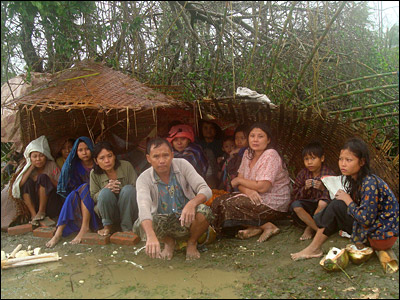The Burmese government has invited three organisations – World Vision, the UN Children's Fund (UNICEF) and the Japan International Cooperation Agency (JICA) – to serve as 'partners' in the relief effort, according to a statement by World Vision.
Further details were unavailable, but a World Vision spokesman said that despite that signal, only two of the roughly 20 World Vision disaster relief experts who had applied for visas had so far received them.
As of 7 May – four days after the disaster, only about 276,000 of the roughly 1.5 million critically affected survivors of the cyclone had received any relief supplies either from UN agencies or international NGOs.
That number is now gradually creeping up, UN officials say, but relief is still coming far too slowly.
"It's still very much too piecemeal for our liking," Amanda Pitt, a spokesperson for the UN Office for the Coordination of Humanitarian Affairs (OCHA), said on 11 May. "One week on, we would normally expect to have far greater coverage. With this many people affected, everybody is very concerned. We do not want to see a second wave of tragic deaths caused by disease and starvation."
UN agencies and international charities operating in Myanmar prior to the disaster have been setting to work in disaster response. But agencies also say that without reinforcements from abroad, their staff on the ground has been stretched to the limit.
Aid trickling in
Emergency supplies – including food, water purification tablets, tarpaulins, and other assistance - are now arriving in Myanmar, and gradually filtering into the low-lying Irrawaddy Delta.
 Photo: WFP/Yi Wang  |
| More than a week after Cyclone Nargis slammed into Myanmar, aid is still just trickling in |
Yet humanitarian workers say that the quantity of relief materials flowing into the region is still just a fraction of what is needed.
Most survivors had not yet received any help, due to a lack of supplies, and difficulties in reaching the distressed survivors in remote parts of the delta.
"Beyond the main arterial roads, it's a massive challenge, not only because the flood waters are still there, but also because even when they are not, it's extremely difficult to navigate," Marcus Prior, a WFP spokesman said.
Without adequate relief supplies reaching them in their own areas, many victims are thronging small towns, now struggling to cope with a flood of displaced people and quickly running out of supplies.
Grim conditions in Irrawaddy Delta
International aid workers contacted in the commercial capital Yangon on 9 May painted a grim picture of conditions in the stricken Irrawaddy Delta, a low-lying area, much of which remains submerged.
 Photo: OCHA  |
| A map of Myanmar showing the humanitarian impact it has had throughout the country as of 10 May (full PDF) |
"It's really horrific," said one Yangon-based foreign aid worker, whose national staffers are in from the worst affected areas. "There are villages where everyone survived, but they have been without food and water for a week, and are just on a little hill, surrounded by water, waiting for help."
Soldiers have begun evacuating victims from the submerged areas. But aid workers say the evacuees are just being dropped off in schools or monasteries and then left to fend for themselves with little or no food. The latest OCHA situation report notes reports from UNICEF that there are over 200 makeshift camps of survivors in the delta region identified so far.
UN officials say it is unclear who is running the makeshift refugee camps, what help is being given there, and whether there are proper sanitary conditions to prevent disease.
"It's very dire," said another aid worker. "The army has been out there given out food and supplies, but it's very little. For every hour that goes by, people are dying."
ak/ds/ar/bp
This article was produced by IRIN News while it was part of the United Nations Office for the Coordination of Humanitarian Affairs. Please send queries on copyright or liability to the UN. For more information: https://shop.un.org/rights-permissions




